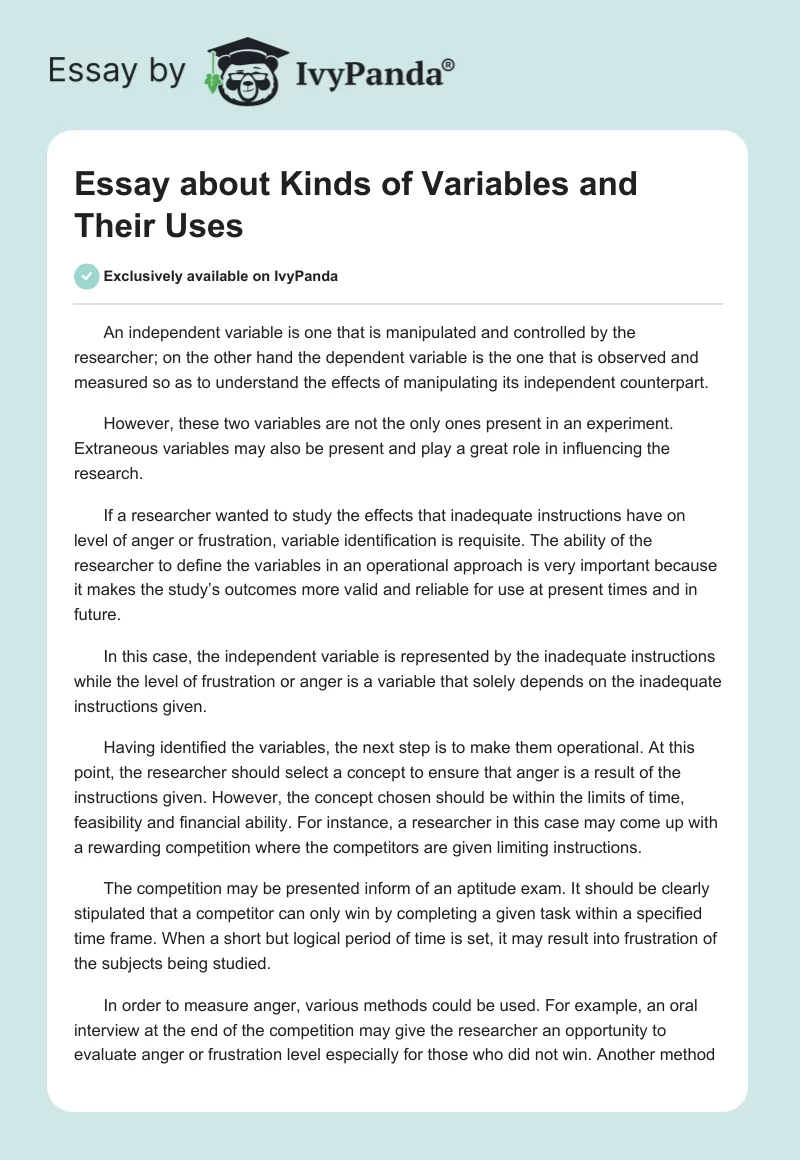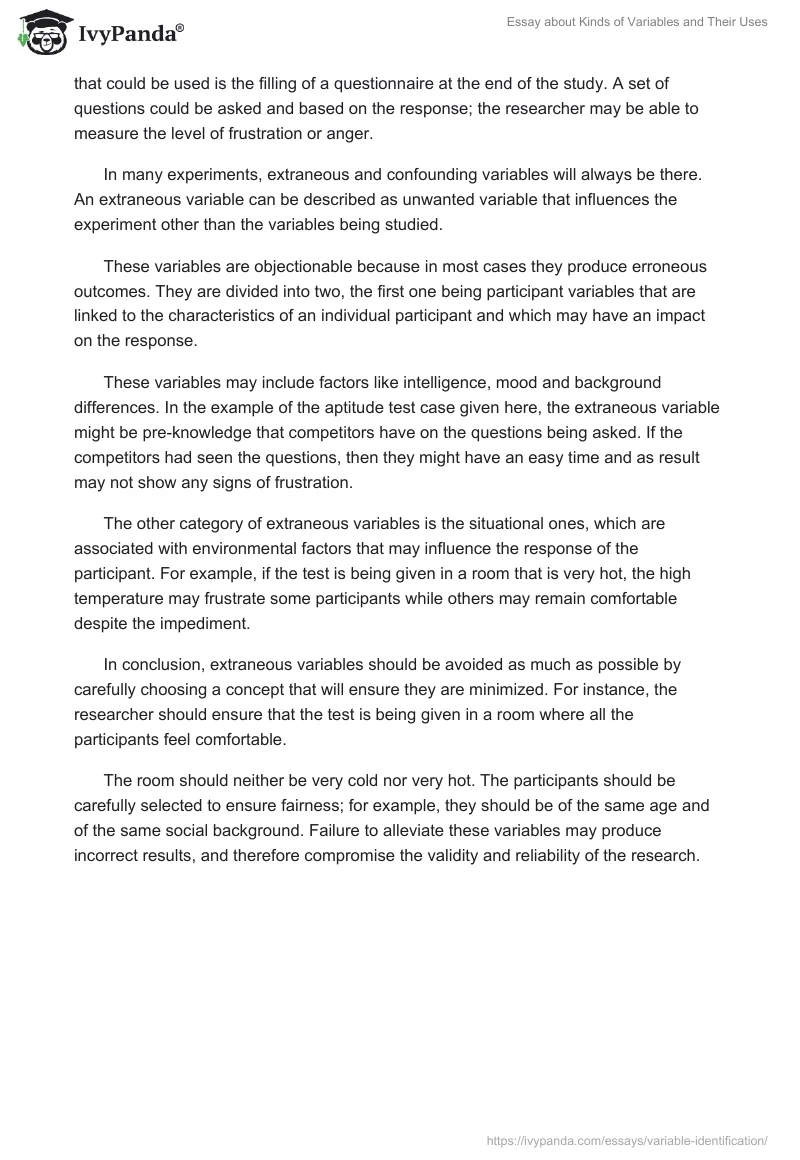An independent variable is one that is manipulated and controlled by the researcher; on the other hand the dependent variable is the one that is observed and measured so as to understand the effects of manipulating its independent counterpart.
However, these two variables are not the only ones present in an experiment. Extraneous variables may also be present and play a great role in influencing the research.
If a researcher wanted to study the effects that inadequate instructions have on level of anger or frustration, variable identification is requisite. The ability of the researcher to define the variables in an operational approach is very important because it makes the study’s outcomes more valid and reliable for use at present times and in future.
In this case, the independent variable is represented by the inadequate instructions while the level of frustration or anger is a variable that solely depends on the inadequate instructions given.
Having identified the variables, the next step is to make them operational. At this point, the researcher should select a concept to ensure that anger is a result of the instructions given. However, the concept chosen should be within the limits of time, feasibility and financial ability. For instance, a researcher in this case may come up with a rewarding competition where the competitors are given limiting instructions.
The competition may be presented inform of an aptitude exam. It should be clearly stipulated that a competitor can only win by completing a given task within a specified time frame. When a short but logical period of time is set, it may result into frustration of the subjects being studied.
In order to measure anger, various methods could be used. For example, an oral interview at the end of the competition may give the researcher an opportunity to evaluate anger or frustration level especially for those who did not win. Another method that could be used is the filling of a questionnaire at the end of the study. A set of questions could be asked and based on the response; the researcher may be able to measure the level of frustration or anger.
In many experiments, extraneous and confounding variables will always be there. An extraneous variable can be described as unwanted variable that influences the experiment other than the variables being studied.
These variables are objectionable because in most cases they produce erroneous outcomes. They are divided into two, the first one being participant variables that are linked to the characteristics of an individual participant and which may have an impact on the response.
These variables may include factors like intelligence, mood and background differences. In the example of the aptitude test case given here, the extraneous variable might be pre-knowledge that competitors have on the questions being asked. If the competitors had seen the questions, then they might have an easy time and as result may not show any signs of frustration.
The other category of extraneous variables is the situational ones, which are associated with environmental factors that may influence the response of the participant. For example, if the test is being given in a room that is very hot, the high temperature may frustrate some participants while others may remain comfortable despite the impediment.
In conclusion, extraneous variables should be avoided as much as possible by carefully choosing a concept that will ensure they are minimized. For instance, the researcher should ensure that the test is being given in a room where all the participants feel comfortable.
The room should neither be very cold nor very hot. The participants should be carefully selected to ensure fairness; for example, they should be of the same age and of the same social background. Failure to alleviate these variables may produce incorrect results, and therefore compromise the validity and reliability of the research.


